Take a look at some of the standout exhibits from the nurseries and growers at the Festival
Edible art
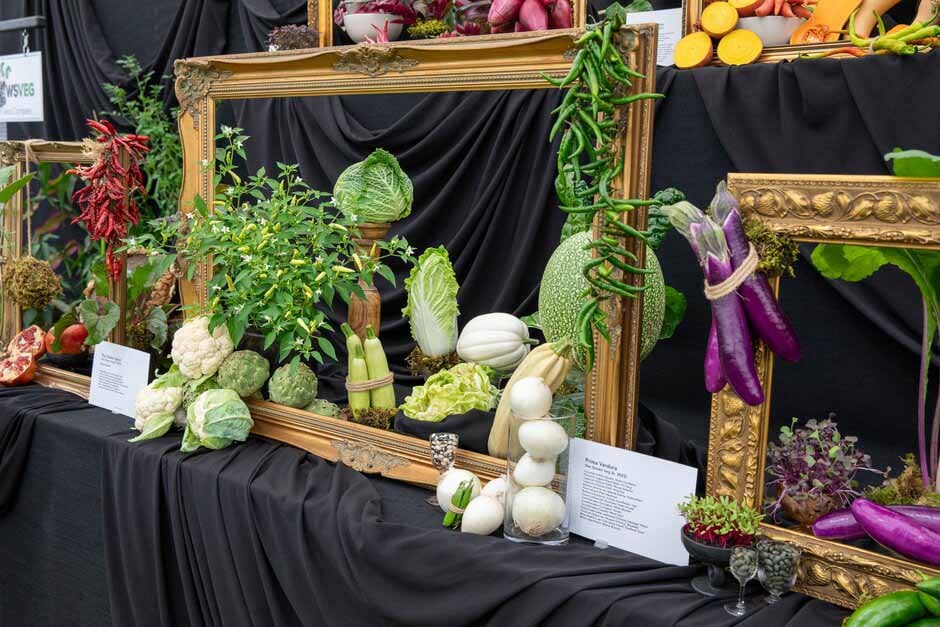
It’s been an incredible year for Lucy Hutchings and Kate Cotterill, who only started their heirloom veg seed company in June 2023. At
RHS Chelsea Flower Show they were part of the Monument exhibit, A Day in the Life of A Nursery, where they displayed their veg in elaborate golden frames. They’ve brought their edible art to the Floral Marquee at RHS Hampton Court – Kate explains the inspiration behind the display.
“We want to elevate veg, so we researched who has portrayed vegetables in an aspirational way, and it was the Renaissance painters. Our frames are inspired by the Dutch masters and we’ve themed them according to colour.”
Each work drips delicious produce you want to reach out, pluck and bite into. The RHS Judges agreed, awarding the display both a Gold medal and the prestigious New Design Award.
 See all the awards and medals of the festival
“It’s great to be at the Festival. As an online company it’s a chance for us to meet our customers and have conversations about what they want and the vegetables they are interested in, and because we do heirloom varieties, all of our veg has amazing stories, so we are able to share them.”
See all the awards and medals of the festival
“It’s great to be at the Festival. As an online company it’s a chance for us to meet our customers and have conversations about what they want and the vegetables they are interested in, and because we do heirloom varieties, all of our veg has amazing stories, so we are able to share them.”
Kate Cotterill – She Grows Veg
Anguloa orchids en masse
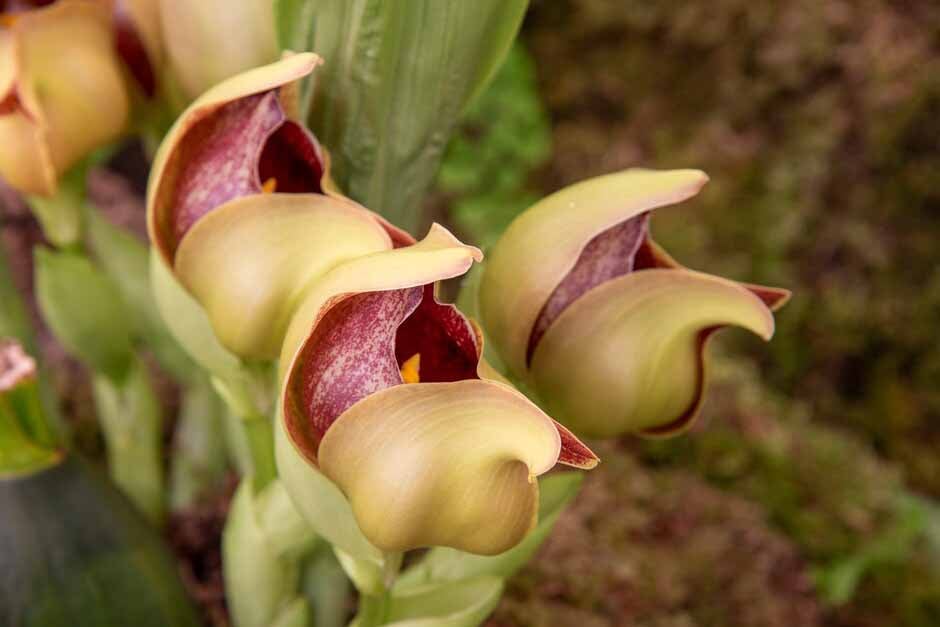 The Orchid Society of Great Britain, working with orchid expert Henry Oakeley, have created an impressive exhibit of 600 flowers on 60 plants including six AGMs. Also known as the tulip orchid, Anguloa are from the northern part of South America and are noted for their large bulbous flower head and unusual aroma of cinnamon, that in some varieties can be reminiscent of Deep Heat. All the orchids on the display are grown by Henry Oakeley, who also discovered and introduced many of the hybrid varieties.
The Orchid Society of Great Britain, working with orchid expert Henry Oakeley, have created an impressive exhibit of 600 flowers on 60 plants including six AGMs. Also known as the tulip orchid, Anguloa are from the northern part of South America and are noted for their large bulbous flower head and unusual aroma of cinnamon, that in some varieties can be reminiscent of Deep Heat. All the orchids on the display are grown by Henry Oakeley, who also discovered and introduced many of the hybrid varieties.
They are also sometimes called the baby and the cradle orchid for their unusual pollination mechanism. A sufficiently heavy bee triggers a cantilever system, opening the flower and allowing it in to feast on the nectar and pick up a dose of pollen on the way out again.
Given the right conditions Henry says that Anguloa are easy to grow. His live in a greenhouse and need a minimum night temperature of 10-15 degrees in the winter and summer temperatures below 30 degrees.
If you want to try your hand at growing this extraordinary flower, visit the Floral Marquee at the Festival for advice and tips.
Playing with plants
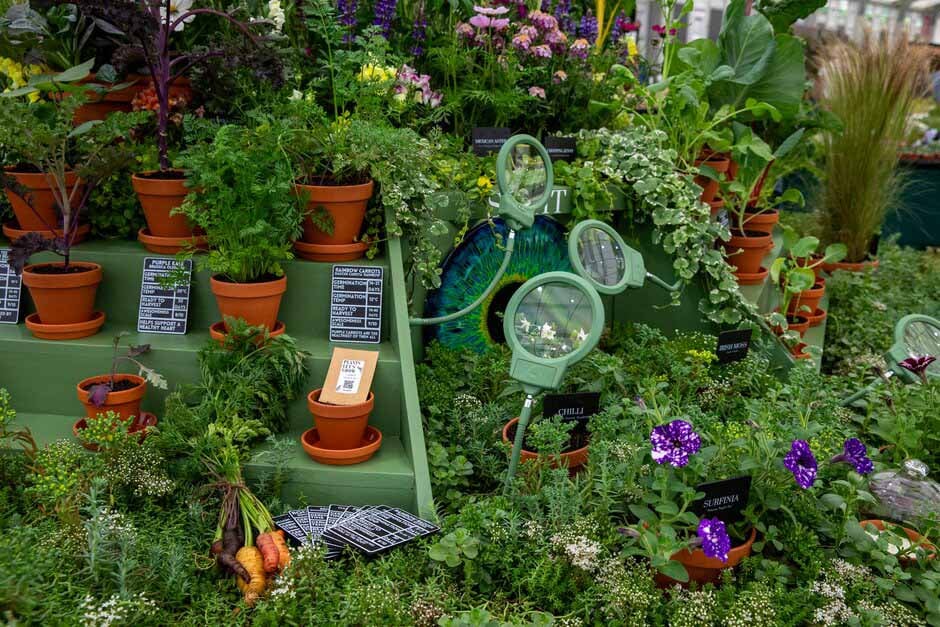
Lee Norbury of Plants Let’s Grow has created a fun, interactive display for his first show exhibit, which takes a sensory theme. Each of the five senses is illustrated with ceramic glow-in-the-dark artwork and a plant theatre showing the stages of growth, from seed and seedling to fully grown plant. Every plant has a Top Trumps style card with statistics on germination and harvesting as well as an ‘awesomeness’ rating. There are also magnifying glasses to see the plants up close, homemade candles scented with the various plant on the display so visitors can test the olfactory skills and an iPad playing a video of the history of the nursery.
The brass section
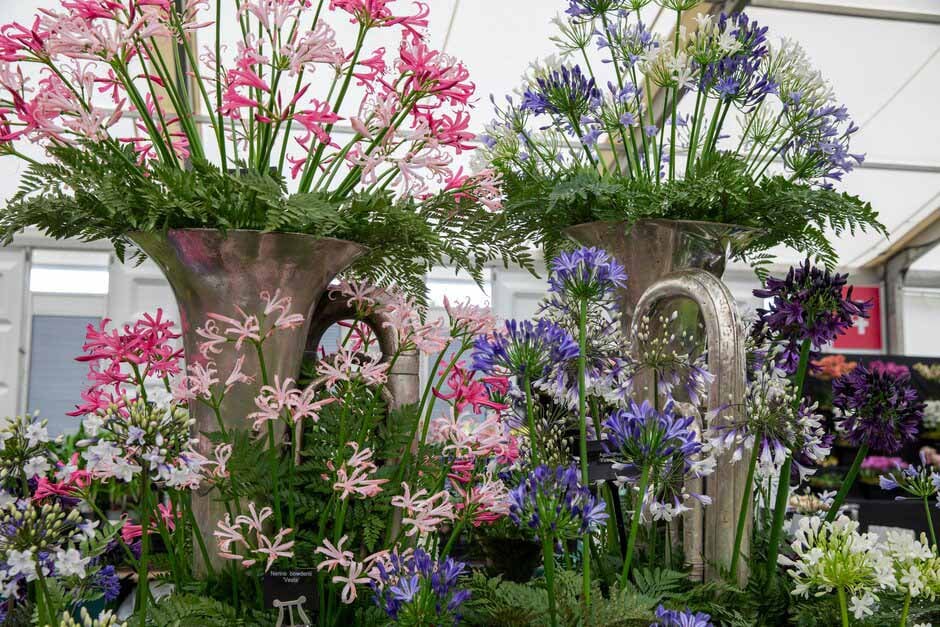 Hoyland Plant Centre sit in the middle of the Floral Marquee with their display of agapanthus and nerines, bursting out from the bells of large tubas. The pink and purple flowerheads explode from the brass vase like fireworks in the eye-catching display.
Hoyland Plant Centre sit in the middle of the Floral Marquee with their display of agapanthus and nerines, bursting out from the bells of large tubas. The pink and purple flowerheads explode from the brass vase like fireworks in the eye-catching display.
Steven Hickman explains the story behind the display, “I come from a mining community, and a lot of the instruments of the colliery band have become surplus to requirements. We acquired them and decided to do a ‘Brassed Off’ theme. My dad worked at Elsecar Main for 45 years and we used to play in the brass bands when we were kids.”
The family run nursery specialise in Amaryllidaceae and have National Collections of Agapanthus, Clivia and Tulbaghia. They are Show regulars and you can catch them at RHS Tatton Park as well as flower shows at RHS Gardnes Hyde Hall, Rosemoor and Wisley this year.
SS Great Britain
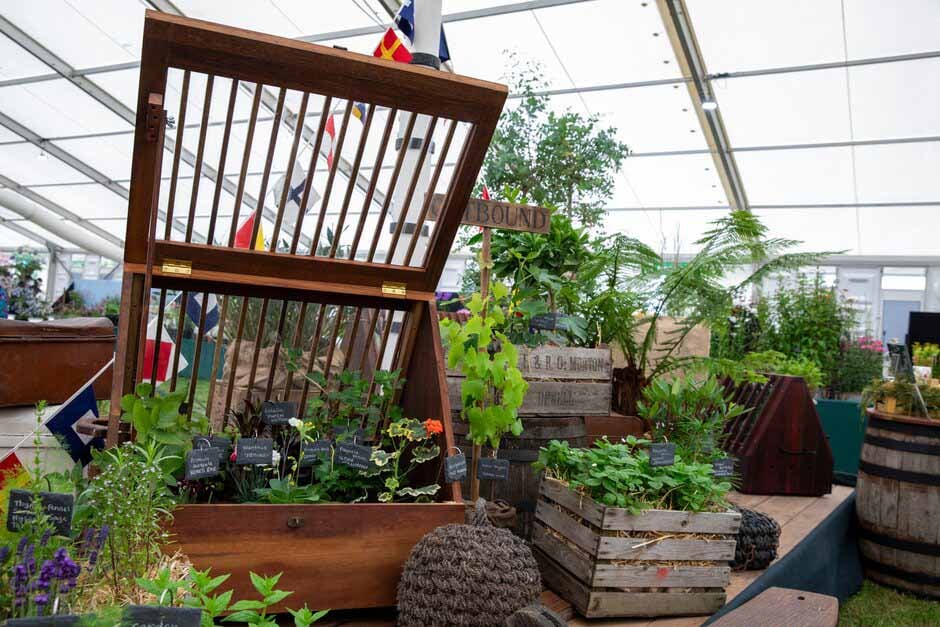
A recreation of a ship’s deck tells the fascinating story of the role the SS Great Britain played in bringing some of our much-loved tropical plants to our gardens and the creation of the Wardian Case, which made it possible.
In 1859 the ship was the country’s fastest steamship and when recently researching its history, Dr James Boyd discovered that it had become almost a ‘floating garden’. It fed the Victorian passion for ferns with shipments from Australia, returning with typical English species such as roses, rhododendrons and even brambles.
“Australian orchids were hugely popular, and could be sold for tens of thousands of pounds in today’s money”
– Dr James Boyd
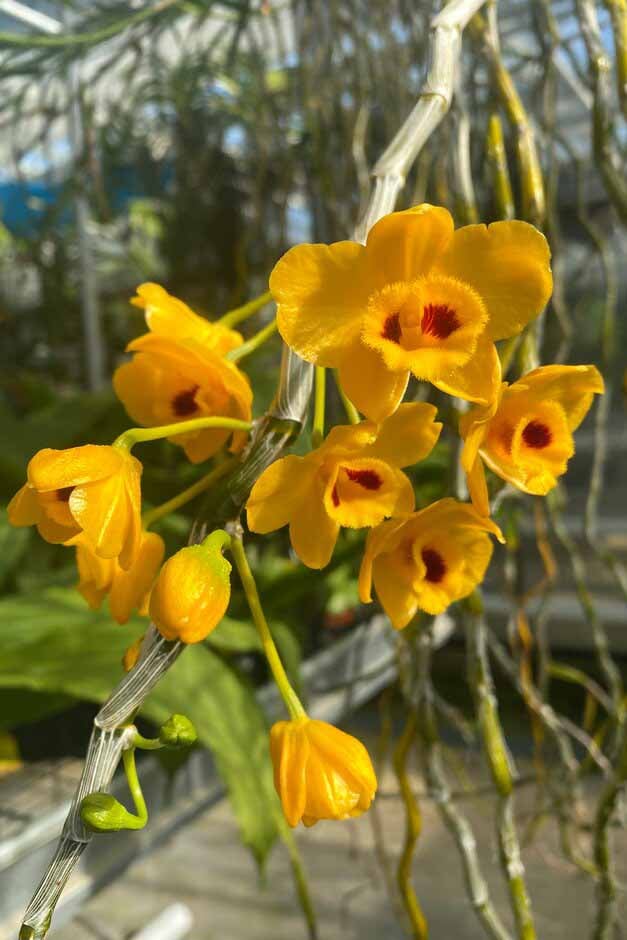 This was made possible by Dr Nathaniel Ward’s realisation that the ferns in the bottom of a sealed jar he was using to hatch a moth cocoon were thriving. This led to the first prototypes for what would become the Wardian Case, a transportable box with glass panels which protected plants from extreme weather, temperatures and salt water, while also being easily transportable. Before it started to be used in the 1840s, 90 percent of plants died on the journey – now 90 percent of the plants were surviving, revolutionising the distribution of plants for commercial and medical purposes.
This was made possible by Dr Nathaniel Ward’s realisation that the ferns in the bottom of a sealed jar he was using to hatch a moth cocoon were thriving. This led to the first prototypes for what would become the Wardian Case, a transportable box with glass panels which protected plants from extreme weather, temperatures and salt water, while also being easily transportable. Before it started to be used in the 1840s, 90 percent of plants died on the journey – now 90 percent of the plants were surviving, revolutionising the distribution of plants for commercial and medical purposes.
The exhibit explores this history with two cases, one representing the inward journey, filled with ferns and orchids, and another containing the plants Britons travelling to Australia would take to recreate their home landscape. It’s an engrossing slice of botanic history which tells the origin story of many of our gardens.
Rebranding weeds
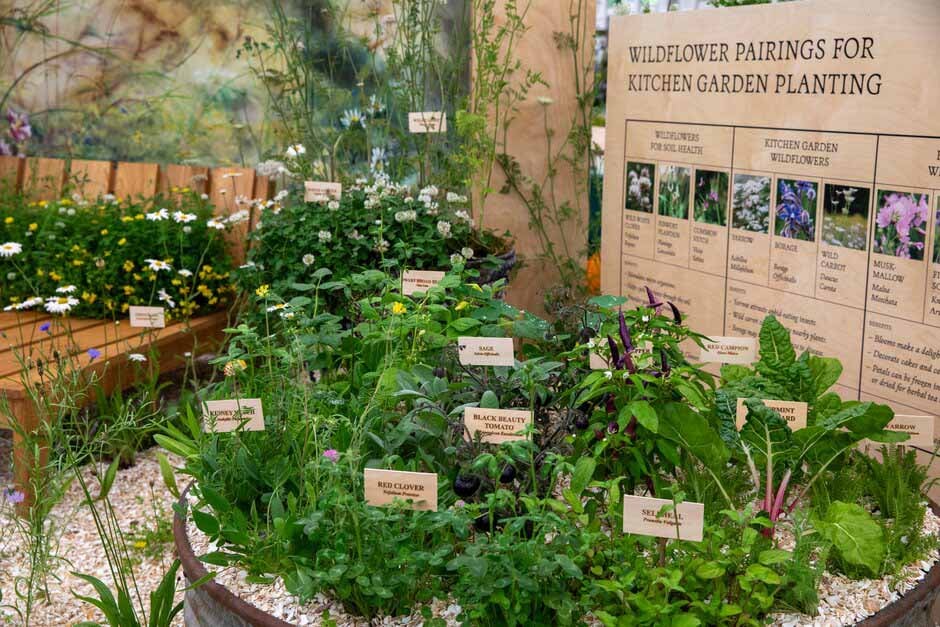
Proving context is everything, Kent Wildflower Seeds are challenging people to rethink their weeds, as Charlotte Denne explains, “We’ve taken plants that you may see in your lawn or gravel paths and ornamentalised them to show that they are beautiful and attract pollinators. They can and do have a place in regular garden planting.
“Many are edible, such as red campion (Silene dioica) and selfheal (Prunella vulgaris) you can treat the young leaves like spinach. Kidney vetch (Anthyllis vulneraria) and salad burnet (Sanguisorba minor) you can harvest the young leaves and use in a salad. Cornflower and musk mallow have edible flowers you can put on cakes or drinks, borage flowers look lovely in a gin and tonic!”
You may also be interested in...

